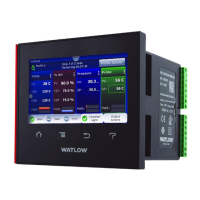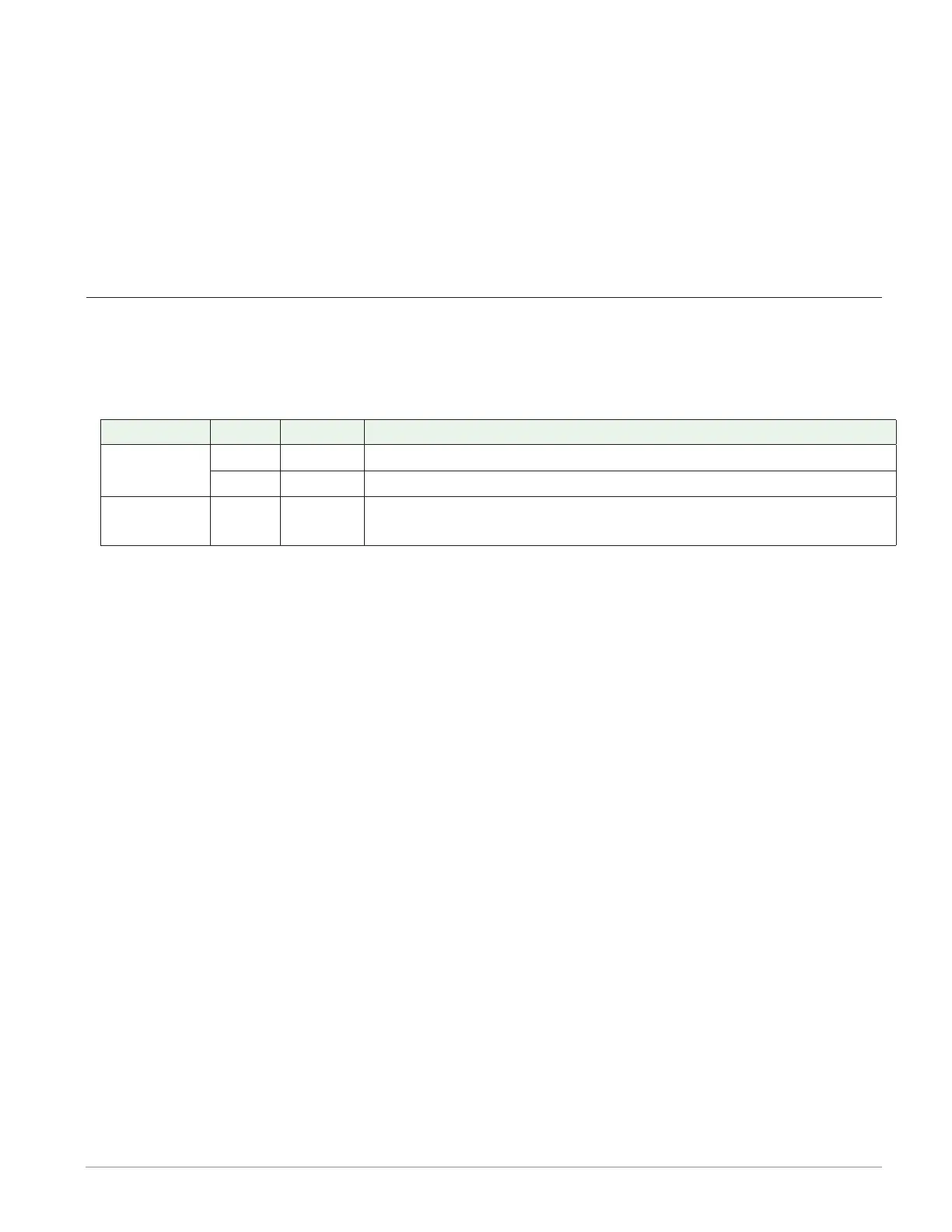Watlow F4T • 109 • Chapter 5 Function Reference
When an error exists on any receiver, the function cannot definitively determine the result of
the comparison and an error will be generated. Use Error Handling to select the output's val-
ue and error status.
Options:
• True Good: outputs value is true (on) with no error
• True Bad: outputs value is true (on) and has an error
• False Good: outputs value is false (off) with no error
• False Bad: outputs value is false (off) and has an error
Equal To
The output (T/F) is on when receivers A and B are equal to each other. See Tolerance.
Signals
Direction Label Type Function
Receiver
A Analog Signal to be compared to B
B Analog Signal to be compared to A
Transmitter T/F Digital
On when A and B are equal and within tolerance, otherwise
off
Function
To test if A and B are equal to each other, set Function to Equal To.
Tolerance
Use Tolerance to set how precisely A and B must match to be considered equal. For example,
with Tolerance set to 2, the values 10 and 12 are considered equal, but 10 and 12.5 are not.
Range: 0 to 99,999
Error Handling
When an error exists on any receiver, the function cannot definitively determine the result of
the comparison and an error will be generated. Use Error Handling to select the output's val-
ue and error status.
Options:
• True Good: outputs value is true (on) with no error
• True Bad: outputs value is true (on) and has an error
• False Good: outputs value is false (off) with no error
• False Bad: outputs value is false (off) and has an error

